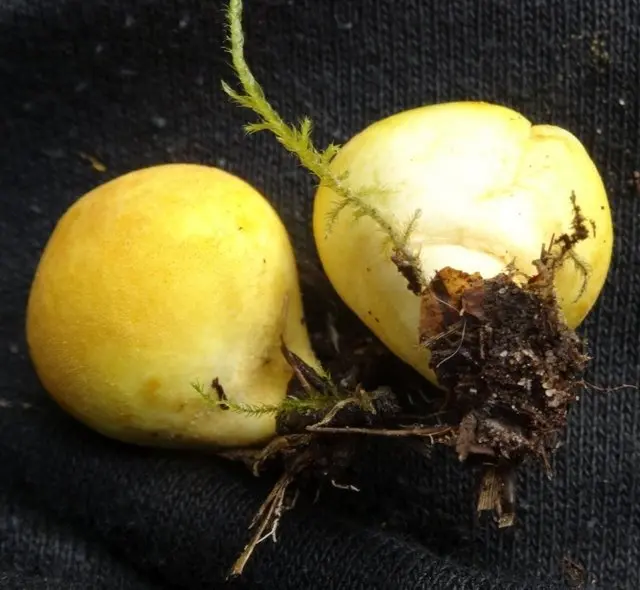Yellow puffball (Lycoperdon flavotinctum)
- Division: Basidiomycota (Basidiomycetes)
- Subdivision: Agaricomycotina (Agaricomycetes)
- Class: Agaricomycetes (Agaricomycetes)
- Subclass: Agaricomycetidae (Agaricomycetes)
- Order: Agaricales (Agaric or Lamellar)
- Family: Agaricaceae (Champignon)
- Genus: Lycoperdon (Raincoat)
- Type: Lycoperdon flavotinctum (Yellow-colored puffball)

The bright, sunny yellow color of the yellow-colored raincoat will not confuse this mushroom with other raincoats. Otherwise, it grows and develops in the same way as other, more famous and much less rare raincoats.
Description
Fruit body: in young mushrooms it is round, almost without a stem, then elongated, pear-shaped, sometimes with a distinct false stem about 1 cm. Small, up to three centimeters in height and up to 3,5 cm wide. External surface bright yellow, dark yellow, orange-yellow, yellow, pale yellow, lighter towards the base; lighter with age. In youth, the surface of the fungus is covered with small spines and pimples. With growth or under the rains, the spines can completely crumble.
If you carefully pull out the fungus, you can see thick root-like cords of mycelium at the base.
When the spores mature, the outer shell cracks at the top, forming an opening for the release of spores.
Spores are formed in the upper part of the fruiting body. The sterile (barren) part is about a third of the height.
Pulp: white, whitish in young specimens, darkens with age, becoming olive brown and turns into a powder containing spores. Soft, fairly dense, somewhat wadded-like in structure.
Smell: pleasant, mushroom.
Taste: mushroom.
spore powder: yellowish brown.
Spores yellowish-brown, spherical, finely prickly, 4-4,5 (5) µm, with a tiny stalk.
Edibility
Edible at a young age, like other edible raincoats: until the flesh is white and dense, it has not turned into powder.
Season and distribution
Summer-autumn (July – October).
The fungus is considered very rare. Fruits not every year, in open areas of soil in mixed and deciduous forests. Occurs singly or in small groups. There is information about finds in Western Europe, North America.
Photo: Boris Melikyan (Fungarium.INFO)









